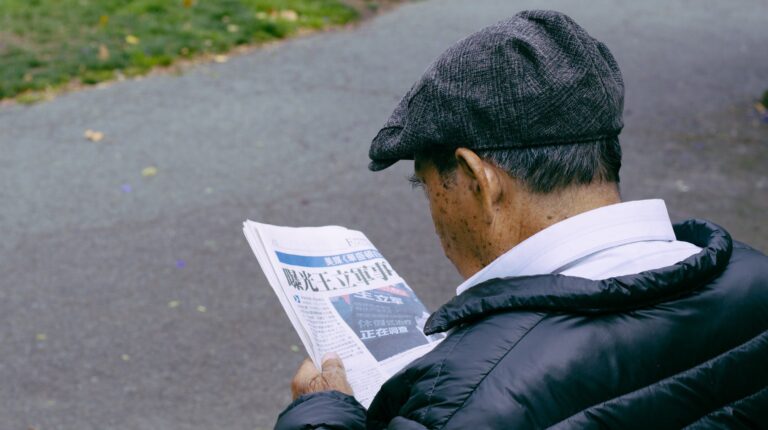How to Read Chinese: Pinyin Final Sounds
If you’re just getting started with Pinyin, start with our first two posts, What is Pinyin? and Pinyin Initial Sounds
RECAP: As mentioned previously, Pinyin uses Roman letters to transcribe Chinese sounds. In Chinese, each character corresponds to one syllable (which can be one word, or part of a word). Chinese syllables consist of three elements: an initial sound, a final sound and a tone. Today we’re going to learn about final sounds.
Final Sounds
There are three types of final sounds. Simple finals, compound finals, and nasal finals. As you take a look at the charts below, look at the initial sounds that combine with the final sound to make the character in the Chinese example. See if you can recognize any of the characters from the initial sounds you have already learned.
Simple Finals
| Final Sound | English Sound Equivalent | Chinese Example |
| a | pronounced as the a in “father” | 妈 mā (mom) |
| e | pronounced as the er in “serve” | 客 kè (guest) |
| i | pronounced as the ee in “bee” | 一 yī (one) |
| o | pronounced as the o in “fox” | 我 wǒ (I) |
| u | pronounced as the woo in “wood” | 不 bù (not) |
| ü | pronounced as in German or French. Similar to lure (“ooh” with pursed lips) | 女 nǚ (woman) |
Compound Finals
| Final Sound | English Sound Equivalent | Chinese Example |
| ai | pronounced as the i in “bike” | 来 lái (come) |
| ao | pronounced as o in “now” | 好 hǎo (good) |
| ei | pronounced as the a in “may” | 美 měi (beautiful) |
| ia | pronounced as the y in “yes” and slide to a as in British “are” | 下 xià (below) |
| iao | pronounced as the combination of the beginning consonant in “yes” and the o in “how” | 小 xiǎo (small) |
| ie | pronounced similar to the ye in “yes”. | 谢 xiè (thanks) |
| iou/iu | iu is always pronounced as iou – pronounced as a slide from “y” as in “yes” to the “o” in “go“ | 久 jiǔ (long ago) |
| ou | pronounced as the o in “so“ | 有 yǒu (have) |
| ua | pronounced similar to the American “what” without “h” and “t”. Sounds like the English spelling “wah” | 花 huā (flower) |
| uai | pronounced similar to the English word “why” | 快 kuài (fast) |
| üe | pronounced as a slide from pinyin “ü” (German “ü” or the French “u”) to the vowel “e” | 月 yuè (month) |
| uei/ui | pronounced similar to the sound in “wait”. It is spelt as “wei” when it stands as an independent syllable. | 喂 wéi (a greeting for answering the phone) |
| uo | Pronounced similar to the British English “war” . The spelling “wo” is used when it stands as an independent syllable. | 说 shuō (say) |
Nasal Finals
| Final Sound | English Sound Equivalent | Chinese Example |
| an | pronounced as the un in “fun” | 安 Ān (peace) |
| en | pronounced as the en in “taken” | 很 hěn (very) |
| ian | pronounced as the en in “yen” | 天 tiān (sky) |
| in | pronounced as the in in ‘pin‘ | 心 xīn (heart) |
| uan | pronounced as the an in “wan” | 欢 huān (happy) |
| un | pronounced as the on in “won” | 准 zhǔn (standard) |
| üan | ü as pronounced above +an | 元 yuán (dollar) |
| ün | ü as pronounced above +n | 军 jūn (army) |
| ang | pronounced as the ong in “song“ | 上 shàng (above) |
| eng | pronounced “e” is as described above, followed by the nasal “ng” sound | 朋 péng (friend) |
| iang/yang | pronounced similar to “young”. The spelling “yang” is used when it stands as an independent a syllable | 两 liǎng (two) |
| ing/ying | pronounced as the ing in “sing”. The spelling “ying” is used when there is no consonant in the beginning of a syllable. | 明 míng (bright) |
| iong/yong | Pinyin “y” + “u” + “ng”. The “o” is affected by “y”⑴ and so sounds similar to the vowel in “too”. The spelling “yong” is used when there is no consonant in the beginning. | 穷 qióng (poor) |
| ong | pronounced “o” is as described above, followed by the nasal “ng” sound | 懂 dǒng (understand) |
| uang/wang | The spelling “wang” is used when it stands as an independent syllable. | 黄 huáng (yellow) |
Final Notes
When first learning Pinyin, it is very helpful to keep three general principles in mind:
- The relationship between any letter and any sound is arbitrary. A letter can represent one sound in English and another sound in Chinese.
- The same letter or combination of letters can sometimes be pronounced in more than one way in the same language. English has many examples of this, i.e. ough as used in ‘tough’, ‘though’,’through’, and ‘bough’.
- The pronunciation of a particular spelling combination does not always sound exactly the way it looks. Again, English has many examples, i.e. igh in ‘sigh’ or psy in ‘psychology’.
Reading along with someone (either in person, or a recording of a native speaker) will help you get the hang of reading Pinyin. Try some of our “newbie” or “beginner” lessons in the Du Chinese app and you’ll get it down in no time. We recommend checking out our I’m a Cat original story!
Now that you know how to put together and pronounce your pinyin initial and final sounds, it’s time for the last piece of the puzzle: tones!







